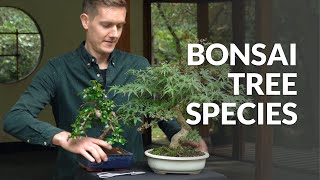Cercis Bonsai Care guidelines
The Judas tree needs a place in full sun during the growing season, but should be placed in semi-shade on the hottest summer days. Cercis trees can survive a little frost when they grow in the ground, but bonsai trees which are planted in small containers must be protected from frost. They are best overwintered in a cold frame.
The rootball of the Judas tree needs constant moisture and should never dry out completely. In winter the roots should be kept only slightly moist. The Cercis prefers water with a neutral or slightly acidic pH value. Continue reading about watering Bonsai trees.
Watering
Free lecture from the Beginners CourseDuring the growing season feed the tree every week with liquid fertilizer or apply a solid organic fertilizer every four weeks. Use a balanced product with sufficient phosphorous, potassium and micronutrients to promote flowers and fruit.
Older branches of the Judas tree are best pruned in spring after flowering. Young shoots are constantly trimmed back to two or three leaves during the growing season and unwanted buds and shoots are removed at any time. Cercis trees can best be wired in June. Younger branches are quite flexible, older ones become quite stiff, but they can be shaped with guy wires in early spring. Continue reading about pruning Bonsai trees.
Judas trees should be repotted every two or three years in spring before growth begins. Up to one third of the roots can be pruned. Use a well-draining standard soil mix with a neutral or slightly acidic pH value. Continue reading about repotting Bonsai trees.
Judas trees can be propagated from from seed in spring or from semi-hardwood cuttings in mid-summer. Air-layering is also possible.
Scale, leafhoppers, canker, coral spot and Verticillium wilt can attack the Judas tree. If pests or diseases occur, use a specific pesticide or ask a professional gardener for help in severe cases. For more detailed information on these techniques, check out our Bonsai tree care section.

Judas tree Bonsai (Cercis)
General information about the Judas Bonsai tree
Judas Trees are small deciduous trees or shrubs with an alternate growth pattern. The leaves are round or heart-shaped and blueish green. The magenta, purple or white flowers appear in clusters in spring, before or while the leaves appear. The fruits are around 4" (10cm) long brown hanging legumes. The common name Judas Tree derives from the legend that says that apostle Judas Ischariot, after betraying Jesus to the Romans, had hanged himself on a Cercis tree. The Judas Tree is a good choice for an attractive and rare bonsai tree. It is not very frost hardy and needs protection in winter. If you need help identifying your tree, take a look at our Bonsai tree identification guide.





